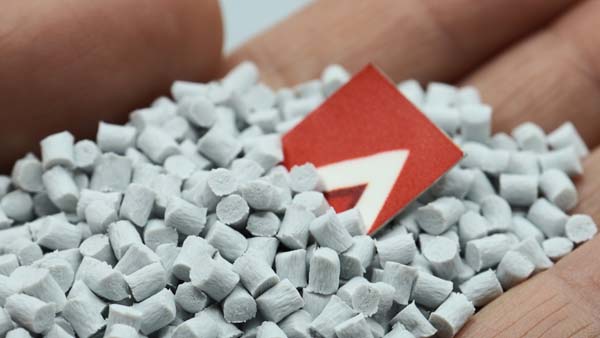 Led light diffusing plastic compounds
Led light diffusing plastic compounds
Rapid advances in LED lighting are due to the promise of increased energy efficiency, increased bulb life, and the lack of heavy metals such as mercury. Although the benefits are many, a standard LED light produces a unidirectional light that many consumers find harsh and lacking in warmth. To reduce the glare and diffuse the light, we have developed a series of acrylic bead light diffusers that when compounded into a polycarbonate bulb or tube produce a diffuse light with a high degree of light transmission.
1. The market for Led applications
A standard LED light bulb utilizes 88% less energy than an incandescent bulb and 15% less energy than a CFL bulb and lasts for 20-30 years. This evolution in lighting, from flame-lit lamps to incandescent bulbs and fluorescent tubes and now LED, has been enabled by advances in material science and plastics. These advances include the development of new phosphors, microelectronics, and heat-dissipating plastics.
Evolution of Lighting
Although LED lighting has been adopted in applications including displays, signals, automotive, and mobile devices, the largest growth market is in residential and commercial lighting. This market includes the replacement of standard bulbs and tubes with LED bulbs and LED tubes, troffers, light boxes, and light panels for illumination. The growth rate for LED lighting will be substantial and will continue to replace conventional lighting. Therefore, light diffusion compound demand will grow in the near future.
This fast adoption rate is being further accelerated by legislation on energy efficiency and by the reduction in the price of LED lighting solutions. Further reductions in cost will be realized as production increases and fewer light points are required to generate increased lumens/watt.
Technology
A Light Emitting Diode is an electronic device that produces light when an electrical current is passed through it. The wavelength/color of the light that is emitted is dependent on the semiconductor and phosphor that is used.
For general lighting applications, blue LEDs that have a layer of yellow phosphor placed over the LED are used. The phosphor absorbs some of the blue light and emits yellow light. The unabsorbed blue light mixes with the yellow light to give white light.
The materials utilized in a LED bulb are quite different than those used in a conventional incandescent and fluorescent bulb. LED bulbs not only consist of a LED but also a circuit board to control the electronics. The packaging utilized in LED bulbs and tubes is also different.
Two features are especially noteworthy. First is the aluminum finned bulb body which is part of the LED heat-dissipating system. This is required to dissipate the heat and improve the life and long-term performance of the LED.
More recently, aluminum has been replaced with plastics such as polyamide and polycarbonate containing heat-conducting fillers.
The second feature involves the elimination of the need for a sealed glass bulb cover. Since the LED is itself encapsulated there is no need for an inert or for sealed metal vapor atmosphere. This allows light designers much more flexibility in developing new lighting fixtures. Additionally, the bulb cover can be made of a plastic such as a polycarbonate or polymethylmethacrylate making for a more rugged bulb.
2. LED light diffusing plastic compounds
Typically these covers are made of polycarbonate or polymethylmethacrylate and contain 1-2 wt% of a diffuser material. Light diffuser materials function by scattering the light due to a difference in refractive index between the matrix and diffuser particles.
The greater the difference in refractive index the higher amount of scattering and light diffusion. Other factors such as particle size and loading level will also impact the amount of light scattering.
The performance of light-diffusing material is determined by measuring the total light transmission (TT%) and the amount of light diffused, utilizing a goniophotometer to determine the viewing angle (degree) at which light transmission is reduced by 50% relative to the maximum light transmission.
3. Acrylic Bead Light Diffusers
We have developed a series of acrylic bead light diffusers that when compounded into a polycarbonate (PC) and PP bulb or tube produce a diffuse light with a high degree of light transmission.
Modeling studies and experimental testing has determined that diffusion and transmission in a PC/PP matrix are primarily controlled by three critical parameters: particle loading level, particle size, and refractive index of the particle.
Europlas Light Diffusion Compound, which gives the optimal balance of high light transmission and adequate light diffusion in polycarbonate to produce a LED bulb of high lumens per watt and reduced glare.
4. Conclusion
New materials and lighting designs will enable LED lighting to deliver on the promise of increased energy efficiency and sustainability. Acrylic bead light diffusers will play a prominent role in providing light diffusion without severely impacting light transmission.